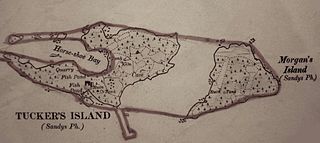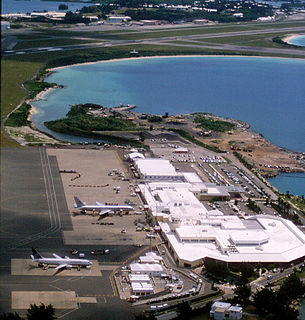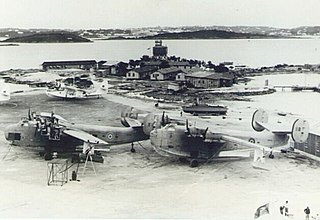
Morgan's Island was an island of the British Overseas Territory of Bermuda. It was part of the land leased to the United States Government in 1941 for ninety-nine years for the construction of the Naval Operating Base Bermuda, a joint shipping base and naval air station. Morgan's Island was joined by infilling to nearby Tucker's Island, and the two were connected to the Main Island by a narrow infilling, creating a peninsula. The base, by then designated the Naval Air Station Bermuda Annex, was closed in 1995 along with other US bases in Bermuda. After a delay while the issue of toxic waste deposits was argued between the British/Bermudian and US Governments, the land was handed back to the Government of Bermuda and allowed to return to nature pending the clean-up of toxins and a decision on its future. The only user of the area was the Royal Bermuda Regiment, which had begun training there when it was still a US base. Following public outrage at plans to develop a Jumeirah resort hotel at Southlands, then a wooded private estate on the South Shore, the government traded the former US naval base to the developers in exchange for Southlands, most of which was designated as parkland. Morgan's Point, as the former naval base is now called, is currently being cleared to make way for the new resort. [1] [2] [3]

Bermuda is a British Overseas Territory in the North Atlantic Ocean. It is approximately 1,070 km (665 mi) east-southeast of Cape Hatteras, North Carolina; 1,236 km (768 mi) south of Cape Sable Island, Nova Scotia; and 1,759 km (1,093 mi) northeast of Cuba. The capital city is Hamilton. Bermuda is self-governing, with its own constitution and its own government, which enacts local laws, while the United Kingdom retains responsibility for defence and foreign relations. As of July 2018, its population is 71,176, the highest of the British overseas territories.

The United States Navy's Naval Operating Base was a seaplane base in Bermuda, the original U S Naval Air Station Bermuda. Following the US Navy's takeover of Kindley Air Force Base, the base was adapted to other uses as an annex to the new USNAS Bermuda, the NAS Annex. Following the end of the Cold War, the base was closed in 1995, along with other US Naval, Royal Naval, and Canadian Armed Forces facilities in Bermuda. At one point, the disused seaplane base/Annex was to be redeveloped into a golf course.

Tucker's Island was an island of the British Overseas Territory of Bermuda. It was part of the land leased to the United States Government in 1941 for ninety-nine years for the construction of the Naval Operating Base Bermuda, a joint shipping base and naval air station. Tucker's Island was joined by infilling to nearby Morgan's Island, and the two were connected to the Main Island by a narrow infilling, creating a peninsula. The base, by then designated the Naval Air Station Bermuda Annex, was closed in 1995 along with other US bases in Bermuda. After a delay while the issue of toxic waste deposits was argued between the British/Bermudian and US Governments, the land was handed back to the Government of Bermuda and allowed to return to nature pending the clean-up of toxins and a decision on its future. The only user of the area was the Royal Bermuda Regiment, which had begun training there when it was still a US base. Following public outrage at plans to develop a Jumeirah resort hotel at Southlands, then a wooded private estate on the South Shore, the government traded the former US naval base to the developers in exchange for Southlands, most of which was designated as parkland. Morgan's Point, as the former naval base is now called, is currently being cleared to make way for the new resort.
Coordinates: 32°17′N64°53′W / 32.283°N 64.883°W

A geographic coordinate system is a coordinate system that enables every location on Earth to be specified by a set of numbers, letters or symbols. The coordinates are often chosen such that one of the numbers represents a vertical position and two or three of the numbers represent a horizontal position; alternatively, a geographic position may be expressed in a combined three-dimensional Cartesian vector. A common choice of coordinates is latitude, longitude and elevation. To specify a location on a plane requires a map projection.












